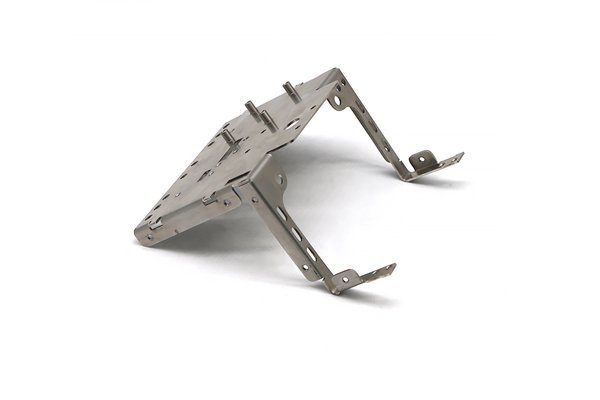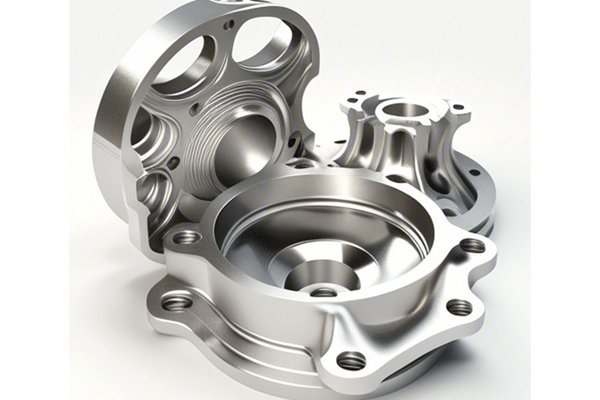Did you know that the automotive industry is projected to use more than 5 million tons of aluminum by 2025? This statistic not only highlights the increasing importance of aluminum in automotive applications but also emphasizes the need for efficient manufacturing processes. CNC (Computer Numerical Control) machining has emerged as a game-changer in the production of precision automotive aluminum parts, offering unmatched accuracy, efficiency, and cost-effectiveness. In this blog, we’ll explore the myriad benefits of CNC machining for automotive aluminum parts, discuss its intricate processes, and how it stands out in contemporary manufacturing.
—
Understanding CNC Machining
CNC machining refers to the automated process of shaping materials using computer-controlled machinery. It allows manufacturers to create complex parts and components with high precision and minimal human intervention. This innovation has transformed how industries produce and assemble components, especially in the automotive sector, where precision and reliability are paramount.
Why Aluminum?
Aluminum is favored in the automotive industry for its lightweight nature and excellent strength-to-weight ratio. This metal not only helps improve fuel efficiency but also enhances vehicle performance and safety through better dynamic handling. CNC machining amplifies these benefits by allowing precise control over the fabrication process.
—
Key Benefits of CNC Machining for Automotive Aluminum Parts
Precision is crucial in automotive manufacturing, given the stringent regulations governing safety and performance standards. CNC machining ensures high accuracy in creating automotive parts, with tolerances often reaching ±0.001 inches. This means that parts can be fabricated with exact specifications, reducing the chances of assembly errors and ensuring optimal vehicle performance.
Solution: Leveraging CAD (Computer-Aided Design) software, engineers can create highly detailed 3D models of the parts, which CNC machines can then faithfully reproduce. Implementing inspection techniques, such as CMM (Coordinate Measuring Machine) checks, ensures ongoing accuracy throughout the production process.
CNC machining excels in producing parts in high volumes without compromising on quality. The programmable nature of CNC machines allows manufacturers to create consistent components that can be replicated over time with minimal variation.
Solution: Establishing a robust setup process guarantees that every part produced meets the same strict quality standards. With automated systems, manufacturers can efficiently switch from one part to another without risking variances in quality.
In the dynamic automotive industry, time is of the essence. CNC machining significantly reduces lead times through its rapid tooling capabilities. This is especially advantageous when manufacturers need to respond quickly to market demands or customer requests.
Solution: Using rapid prototyping processes, manufacturers can quickly create and test parts. CNC machines can produce prototypes within hours or days, enabling faster product development cycles and quicker time-to-market.
CNC machining is renowned for its ability to minimize waste. Smaller scrap rates result from precision cuts that maximize the use of raw materials. The ability to work with various aluminum grades further enhances this benefit, allowing the creation of lightweight, durable components that meet automotive standards.
Solution: By employing advanced nesting software, manufacturers can optimize material layout and cut the parts in a way that reduces leftover material significantly.
One of CNC machining’s standout features is its ability to adapt to various design alterations without significant retooling costs. This flexibility allows automotive engineers to innovate designs easily, enabling iterations that often lead to improved component performance.
Solution: Implementing an agile design process helps manufacturers quickly adapt to changes in design specifications or shifts in project goals. Utilizing CAM (Computer-Aided Manufacturing) software simplifies this transition, allowing for quick adjustments to machining operations.
While the initial investment in CNC machinery can be substantial, the long-term savings associated with automated machining often outweigh these initial costs. Factors such as reduced labor costs, less waste, and increased production speed contribute to overall cost reduction.
Solution: Conducting a cost-benefit analysis before bringing CNC machining in-house can reveal potential savings compared to traditional manufacturing methods. This examination guides investment decisions and future scaling.

The automation provided by CNC systems minimizes human labor requirements in potentially hazardous environments. With robots or machines taking over dangerous tasks, the risk of accidents and injuries significantly diminishes.
Solution: Implementing robust safety protocols alongside CNC systems enhances the overall safety of the manufacturing facility. Regular training sessions for staff on operating these machines responsibly further ensure a safe working environment.
Contemporary manufacturing processes lean towards sustainability, and CNC machining contributes positively in this area. Its efficiency in using materials means less scrap and waste, and advancements in CNC technology often lead to less energy consumption during machining.
Solution: By adopting green practices such as recycling aluminum scrap and using biodegradable lubricants, manufacturers can create a more sustainable production cycle, aligning with global sustainability goals.
—
The CNC Machining Process for Automotive Aluminum Parts
Understanding the core CNC machining process can illuminate why it is such an effective technique for producing automotive aluminum parts.
The journey starts with design, primarily done using CAD software. Engineers develop detailed models to simulate part functions and identify potential manufacturing challenges early on. Prototypes are created quickly via CNC machining, which helps validate designs prior to mass production.
Once the design is approved, CNC programmers use CAM software to translate CAD models into machine instructions, which the CNC machine will follow. This involves defining tools, speeds, paths, and depths for each machining process.
After programming, it’s time to set up the CNC machine. This involves preparing the tools, workpieces, and fixture setup. Accurate setup is vital to ensure the machine operates efficiently and produces high-quality parts consistently.
During machining, the CNC machine executes the programmed commands to cut and shape the aluminum into the desired part. Variants like milling, turning, drilling, or grinding may be employed, depending on the intricacy of the component.
Post-machining, parts undergo rigorous quality control checks. These checks validate dimensions and tolerances against initial designs, ensuring they meet all necessary specifications before being assembled into larger vehicle systems.
After passing quality control, parts may undergo further finishing processes like anodizing or surface treatments to enhance durability, appearance, or corrosion resistance. These finishing touches are crucial for parts exposed to the elements during operation.
—
CNC machining for automotive aluminum parts stands as a hallmark of modern manufacturing excellence. Its precision, efficiency, and flexibility resonate powerfully in an industry that constantly demands innovation and adaptability. This blog has outlined the essential benefits of CNC machining, from high accuracy and consistent production to reduced lead times and environmental sustainability.
As the automotive sector continues to evolve with a focus on lightweight materials, embracing CNC machining could provide a competitive advantage to manufacturers. For automotive professionals, keeping abreast of these machining techniques and their applications is not merely an option—it’s a necessity in a rapidly changing market.
The insights shared herein not only shed light on the critical role CNC machining plays but also reinforce the importance of adapting to technological advancements within the industry. As you contemplate the future of automotive manufacturing, consider how integrating sophisticated CNC processes could elevate your production capabilities, ensuring excellence in design and execution.






